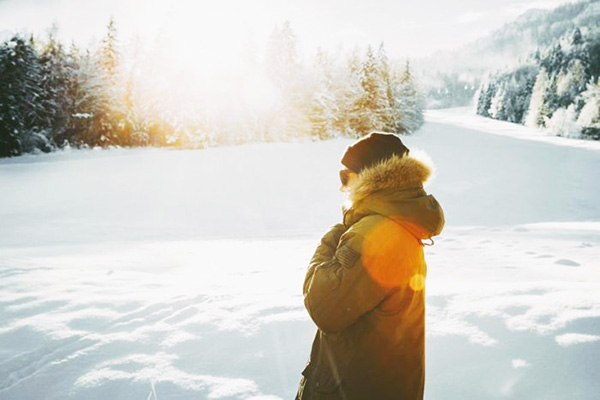There are simply so many fun and exciting outdoor activities to choose from this winter. Unfortunately, engaging in them can put you at risk of suffering from what’s known as snow blindness. This is most especially true of you’re not properly suited up.
Keep on reading if you are planning on partaking in all kinds of leisure pursuits in a snowy terrain or high-altitude winter area. This article will get you introduced to some really important matters about snow blindness.
Don’t forget to repost this article later on in order to get everyone you care about know how they can keep this painful condition concerning the eyes from taking place.
Cause
Just like what it’s called suggests, snow blindness is an eye condition that takes place when there’s snow everywhere. Sometimes it can cause eye pain, usually making it seem like there’s a foreign object in the eye. At times it can cause temporary loss of vision. According to eye experts, snow blindness may result in blindness if it occurs repeatedly.
The culprit behind snow blindness is excessive exposure of the eyes to UV rays. The snow reflects a lot of those harmful UV rays given off by the sun.
Even if you do not stare directly at the sun, it’s still possible for your eyes to be bombarded with UV rays because of the snow around you. Most especially if you are not wearing protective sunglasses or goggles, it’s not unlikely for you to suffer from snow blindness.
Symptoms
Even though it’s called that way, snow blindness won’t necessarily rob you of your vision. Usually, it’s something that will make it seem like there’s a foreign object in your eye, like a grain of sand. In extreme cases, your eyes may close shut due to the pain. In some cases, the eyelid may twitch.
Your vision may be affected, too. For instance, you may notice halos around light sources. It’s also not unlikely for your vision to appear hazy.
Severe cases of snow blindness may temporarily cause loss of vision. Giving the eye plenty of time to bounce back from excessive UV ray exposure can help reestablish your vision faster. If snow blindness happens all the time, experts say that it’s possible for you to go blind.
Treatment
According to eye experts, the main treatment for snow blindness is giving your eyes a much-needed break. This means that you should remain indoors to allow your eyes to recover. It usually takes 1 to 3 days for complete recovery from snow blindness to occur.
Wearing an eye patch can help accelerate the healing process. A piece of gauze or large cotton ball may be used instead as a makeshift eye patch. Applying cold compress can help in alleviating pain.
Rubbing the eyes is a complete no-no. It’s also a good idea to pay an eye doctor a visit so that an eye drop for relieving pain may be prescribed. Seeing an eye doctor also helps ensure that your snow blindness is something that didn’’t do much harm on your peepers.
Prevention
To keep snow blindness from striking, you should refrain from engaging in outdoor winter activities. However, that may prove to be a challenge as such opportunity comes only ones a year.
What you need to do is to make sure that your eyes are protected from UV rays that snow tends to reflect. Check that the eye-protecting gear that you are about to wear in fact offers UV protection.
Look for protective sunglasses that offer sufficient protection, the kind that features a wrap-style design so that your eyes are shielded from UV rays from all angles. For best results, opt for a pair that is dark, polarized or mirror-coated. If you cannot find such sunglasses, get your hands on a pair of snow or glacier goggles to fend off snow blindness.
